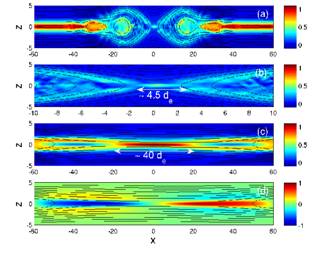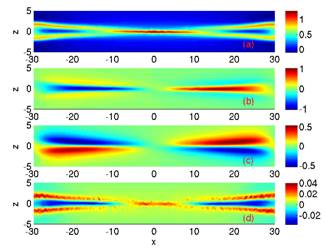Magnetic
reconnection is fundamental plasma process in nature and is responsible for
the fast energy release in space plasmas such as in the solar atmosphere and
the Earth's magnetotail, in laboratory plasmas and many astrophysical
settings. Understanding magnetic reconnection in collisionless plasmas has
been a long standing problem and new theories and numerical simulations
continue to provide new advances. The thin current sheets are the sites of
the onset and evolution of reconnection and an understanding of the
structure and dynamics is closely tied to the reconnection processes. Many
aspects of thin current sheets, such as its kinetic equilibrium, embedded
structure, stability are studied using theory, modeling and simulations. The
finest scale processes are studied using an electron-magnetohydrodynamic
simulations and shows the development of a quadrupole magnetic field
structure and stretching of the current sheet. The shortest length of the
current sheet is found to be about six electron skin depths and such
structures are expected to be measured by the forthcoming NASA
Magnetospheric Multiscale Mission (MMS).


In the project (PI: Dr. Surja Sharma) funded by NASA the
physics at the shortest scales one studied using
computer simulations using the EMHD, two-fluid, global MHD and
particle-in-cell (PIC) models.



